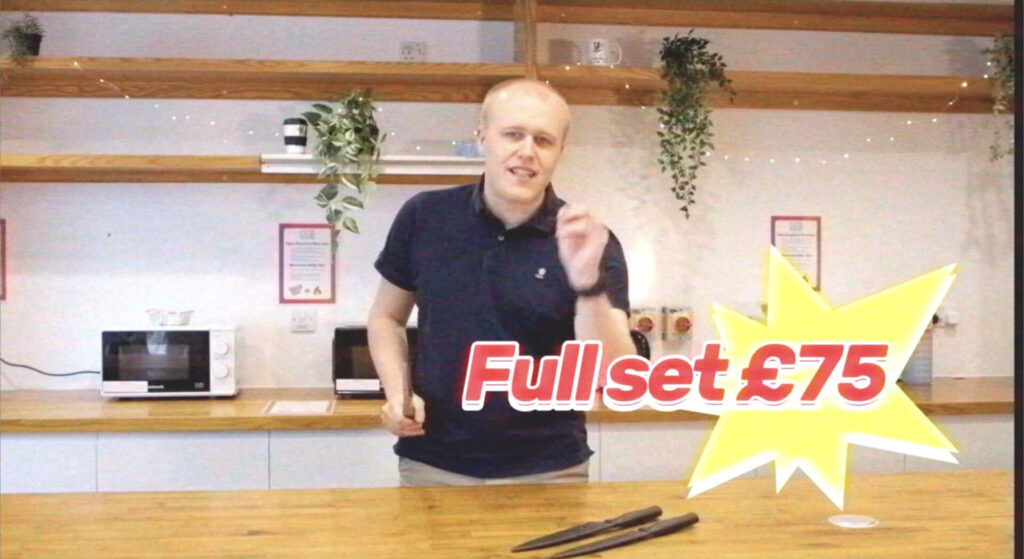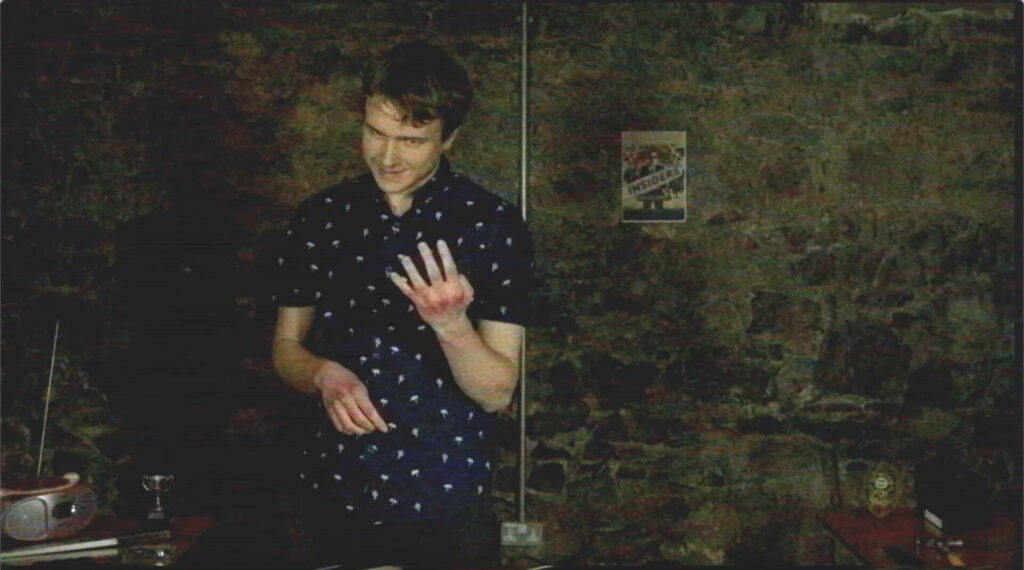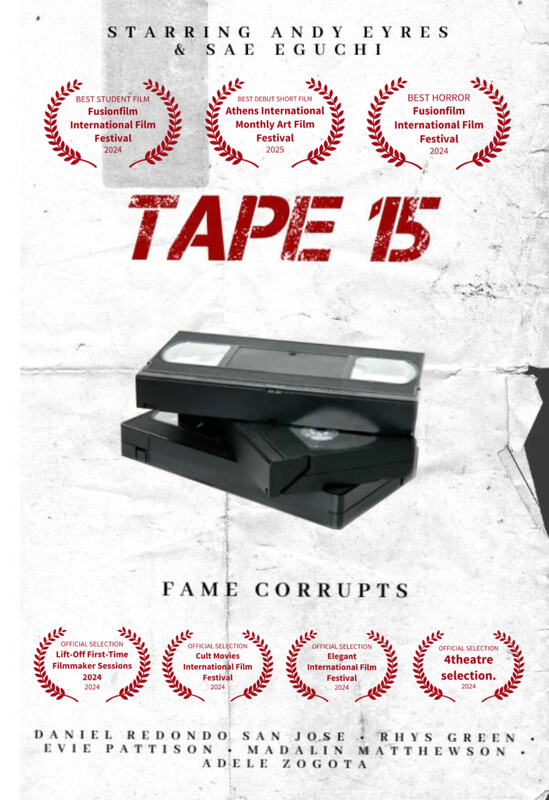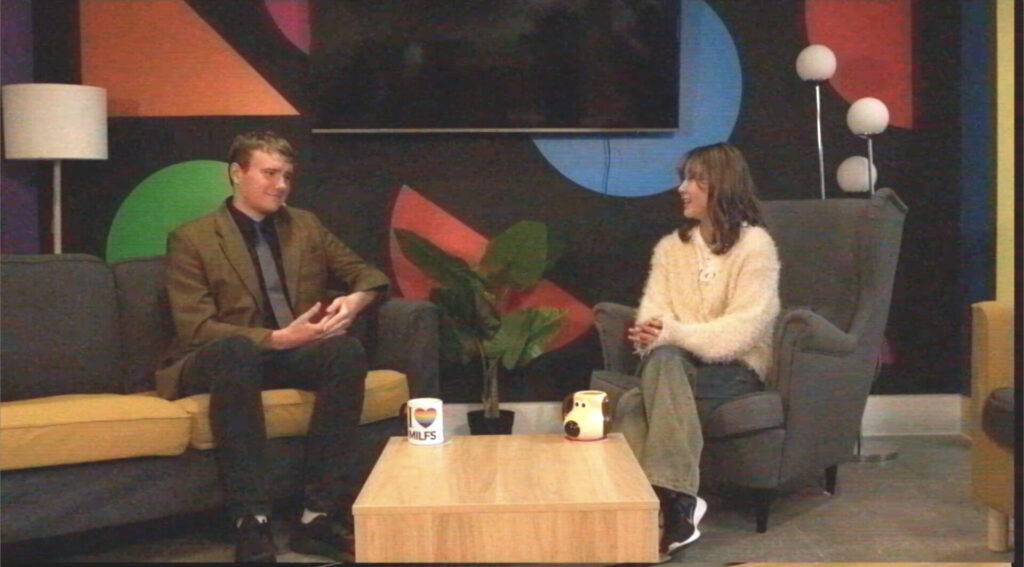




Overview
A serial killer records his methods of torture, but is it safe to trust everything seen online?
Director Biography – Daniel Redondo San Jose

Danny is an undergraduate student at Bangor University studying Film Studies. He has always loved film and has always wanted to use his creative mind in his work. However, it took him until a few months before the beginning of university to find out that you could study film.
Danny has worked on a few productions before Tape 15 and is completely in love with film production. He still hasn’t found a role in production that feels right for him, but he has loved directing and has learnt a lot during the process.
For years, professionals have pondered how deep the personality of this enigma truly is, however when we found out he lives under a bridge, we dropped all investigations.
Expert Review
Logline
A serial killer records his methods of torture, but is it safe to trust everything seen online?
Overview
Tape 15, directed by Daniel Redondo San Jose, ventures into the realm of found-footage horror, mixing psychological tension with a documentary-style narrative. Set in September 1998, the short begins with a chilling message: “In September 1998, a series of killings took place. Despite police effort, the case went cold. This is tape 15 out of 21.” This stark introduction places the audience into a pseudo-documentary mindset, suggesting the disturbing possibility that these events could be rooted in truth, with haunting images that further this impression.
Story and Direction
The short opens on “the abductor,” setting up a closed room with cameras, hinting at the cruel intentions of filming torture. Through the lens, we witness scenes of terror and brutality, creating an unfiltered look at the depravity of the abductor’s motives. The visual style suggests the influence of a TV show that may have fed the abductor’s fascination with infamy, subtly hinting at how media consumption could shape such disturbed characters.
A unique aspect of Tape 15 is the faux-commercial inserted partway through the film. This brief moment showcases various torture tools, a disturbing reminder of how violence can be marketed and normalized. By the end, the narrative leaves the audience with a bleak, unresolved feeling, as it highlights the enduring mystery surrounding the victim’s fate.
Strengths and Weaknesses
San Jose’s pacing is well-executed, allowing the tension to build with each frame, and the frequent scene changes serve as an inventive hallmark of his style. The film’s erratic pacing and jump cuts keep viewers on edge, further intensifying the sense of entrapment and helplessness.
However, Tape 15 falters in its technical elements. Sound quality and cinematography could have been refined to create a stronger impact, and the film’s dialogues occasionally lack the depth needed to fully convey the weight of the horror depicted. These factors slightly detract from the immersive quality, reducing the film’s ability to fully pull the audience into its eerie world.
Themes and Reflections
In portraying a story about abduction and psychological torment, Tape 15 brushes against themes of media influence on violence and the ethical boundaries of recording and sharing cruelty. It underscores a thought-provoking but often overlooked aspect of horror—audiences’ sometimes passive consumption of atrocities and the potential desensitization that results.
Yet, the film could benefit from exploring additional dimensions, such as the motives driving the abductor or a glimpse into the victim’s life and well-being. Greater insight into these areas could elevate Tape 15 from simply shocking to deeply unsettling, inviting audiences to question the ethical implications of their viewership.
Conclusion
Tape 15 succeeds as an experimental horror short that explores the disturbing allure of recorded violence. Its unique approach and pacing highlight Daniel Redondo San Jose’s distinctive mark as a filmmaker. While certain technical aspects fall short, the film’s attempt to blur the lines between fiction and reality, along with its brief but potent reflections on media consumption, make it a memorable, if unsettling, watch.
